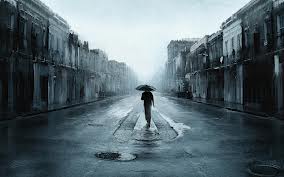Where do Ideas come from?

Where do ideas come from?
'Everybody walks past a thousand story ideas every day. The good
writers are the ones who see five or six of them. Most people don't see any.’
Orson Scott Card
You probably already have your idea. Almost certainly, you have the seed of an idea lying dormant waiting for you to nurture it with Creative Tools.
'Everybody walks past a thousand story ideas every day. The good
writers are the ones who see five or six of them. Most people don't see any.’
Orson Scott Card
You probably already have your idea. Almost certainly, you have the seed of an idea lying dormant waiting for you to nurture it with Creative Tools.
Developing your ideas:
Ideas take time. They rarely, if ever, arrive perfectly formed; ideas are the seeds or the raw materials which you fashion into something unique. During this programme, exercises and games will explore Creative Tools which will enable you to write the stories and poems which only you can write.
Ideas take time. They rarely, if ever, arrive perfectly formed; ideas are the seeds or the raw materials which you fashion into something unique. During this programme, exercises and games will explore Creative Tools which will enable you to write the stories and poems which only you can write.

Where do Ideas come from:
Inside: we are like a set of Russian dolls (Matryoshka Nesting Dolls) and all the smaller versions of our selves are still there. Imagine a 10 year gap between those versions of ourselves and think about the spaces in between. This is where the love and laughter, the hurt and the tears lie. The things we have done, seen, felt, experienced and most importantly, learned, and they leave a resonance which we can tap into. It is the source of the background colour of the canvas of our lives – where we find the themes which run through our stories.
Inside: we are like a set of Russian dolls (Matryoshka Nesting Dolls) and all the smaller versions of our selves are still there. Imagine a 10 year gap between those versions of ourselves and think about the spaces in between. This is where the love and laughter, the hurt and the tears lie. The things we have done, seen, felt, experienced and most importantly, learned, and they leave a resonance which we can tap into. It is the source of the background colour of the canvas of our lives – where we find the themes which run through our stories.

Outside: Observe the world around you. Notice things, especially unusual things and ask Questions: I wonder where he's going? Where is everyone? What has just happened? What would happen if.... ?
Look at how people walk; find pleasure in the unusual; think about how you would describe the people and the location.
Use all of the senses: what can you smell and hear? How does the ground feel beneath your feet? Is it hard, or soft or wet? Touch the bark of a tree or the plastic table cloth on the café table or the ice melting on the window ledges. Be alive in your world and make a note of it all. It is grist to the writer's mill.
Look at how people walk; find pleasure in the unusual; think about how you would describe the people and the location.
Use all of the senses: what can you smell and hear? How does the ground feel beneath your feet? Is it hard, or soft or wet? Touch the bark of a tree or the plastic table cloth on the café table or the ice melting on the window ledges. Be alive in your world and make a note of it all. It is grist to the writer's mill.

Prompts: In these Creative -Kick - Start sessions, we use words, images and object prompts, as well as observations from our lives. Paul Turvey completed a short story, expanded from a picture prompt during session one: read it here
|
By Paul Turvey, written from a picture prompt.
The exercise was based on looking at the image and asking questions. The best question to ask are: I WONDER …. WHAT, WHY, WHERE, WHEN, WHO, HOW, or IF….. |
Try this game: take 10 random words and turn them into micro fiction. Look for 'hooks' which will kick - start and idea.
Here's an example |



